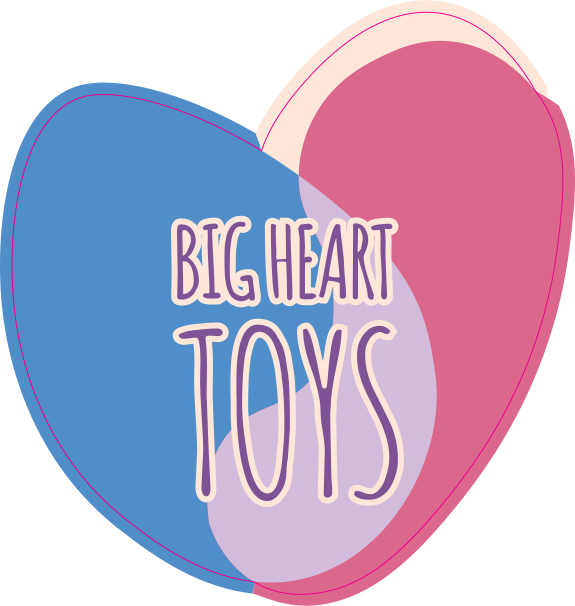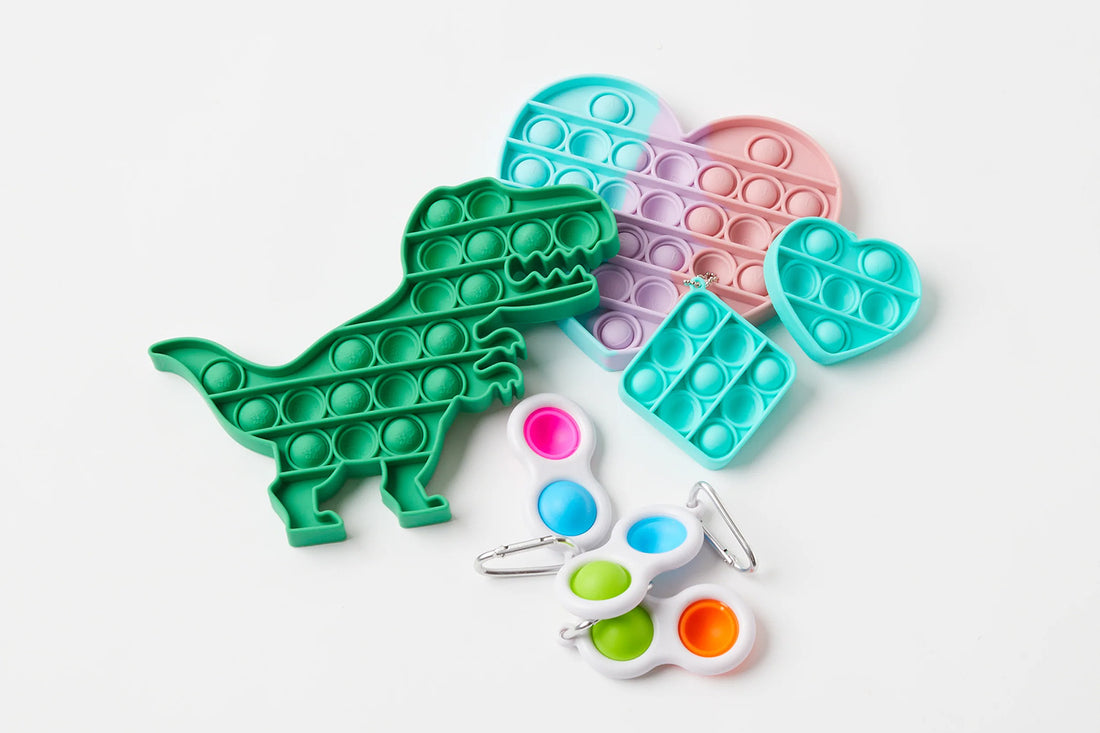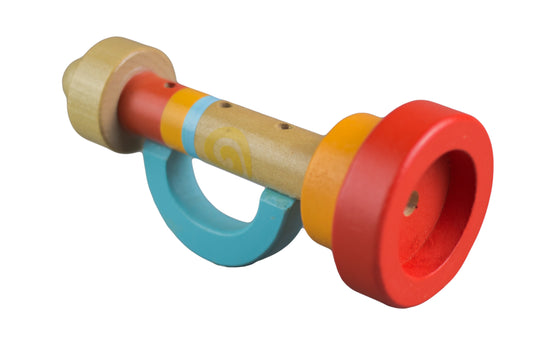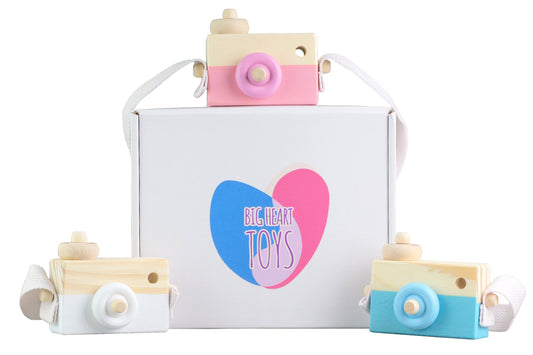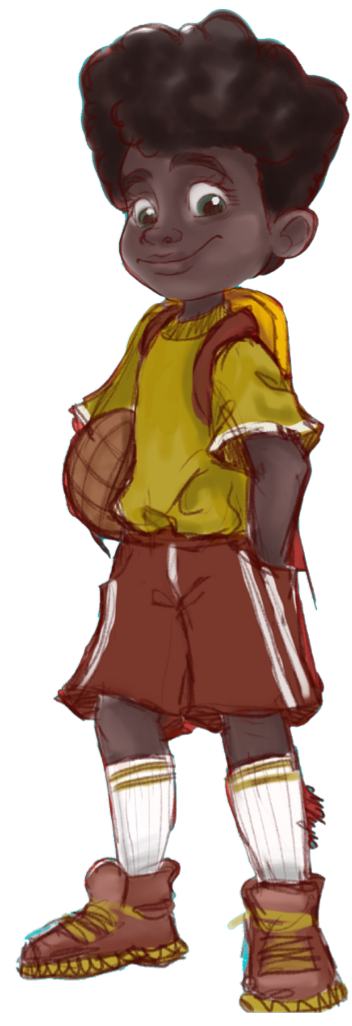If you’re here, you’re likely looking for new tools and toys to add to the toolbox (or toy chest) in your child’s room. Toys are a favorite gift for birthdays, holidays, and more, but certain toys are more than just fun — they help our children overcome fears and insecurities and learn the lessons that matter most.
Today, we are discussing a specific category of toys called “sensory toys” and how they can aid our children with autism. Many of the toys on our list today focus on one sense, but in some cases, they can work with multiple. With these distinctions, you can help determine what toys will work best for your child with autism and their personal needs.
What Is Sensory Input?
Our senses are what tell the body what we need to function and what moves we should make based on the environment around us.
There are the five senses we all learned in school, including taste, touch, sight, sound, and hearing. Then, there are more ways our body senses things that are not as well-known or obvious.
Your outer body awareness helps you move through space. Inner body awareness alerts us to our needs. For example, when our inner body awareness is off, we might feel no pain or too much, not know when to use the bathroom, and that we are hungry or dehydrated.
Sensory Input and Autism: What To Know
A child with autism could struggle to adapt to different sensations or have specific sensory needs or preferences. Understandingly, this can be overwhelming at times.
Autism is closely linked to sensory processing disorders. In fact, sensory issues are part of the diagnostic criteria for autism spectrum disorder (ASD). Some individuals with autism may be prone to sensory overload and hypersensitivity. Others will rely on actions categorized under “sensory seeking behaviors.” One way children engage in sensory-seeking behaviors is through movements called “stimming.”
Stimming is a behavior that calms the brain through repetition. Stimming can be making noises, fidgeting, or moving. These behaviors are based on repetition and aren’t exclusive to only people with autism. While it can present differently, stimming is also seen in those with ADHD or anxiety.
How Can Sensory Toys Benefit Sensory Sensitivities?
Sensory toys satisfy the sensory needs your child is looking to fulfill or help distract away from unwelcome sensations. Both of these, but especially the latter, are grounding techniques that can help with a range of concerns, including anxiety.
Autism is a scale; not everyone will have the same needs or the same self-soothing techniques. As such, some sensory toys might not help your child as much as another. There are many kinds of sensory toys, so it’s simply a matter of try-and-try again. If one doesn’t work, there are five more to try out and see if those have what your family needs.
Sensory toys in this list can also help children relax by appealing to specific repetitive desires. If you have noticed your child is inclined to be more hyperactive, there are sensory toys for that need as well. The right mix of toys can provide for an interactive or calming sensory playtime.
1. Sensory Toys for Touch
These toys have different textures that can be comforting for children with sensory-seeking traits. Children with autism often enjoy certain textures and are bothered by others. Finding out which textures appeal to your child can help avoid sensory overload.
Playdough or Putty
You can buy playdough or putty or make them at home. Add your child’s favorite scent to engage their sense of smell. Scientists are currently studying how smell, also known as aromatherapy, can help promote a sense of calm and focus.
Additionally, playing with putty-like textures can help younger children develop fine motor skills.
Kinetic Sand
This squishy sand can be molded, un-molded, then molded again. Unlike grainy sandbox sand, kinetic sand is loved for its bright colors and soft feel. Thanks to added ingredients like silicone oil, kinetic sand takes on an almost magical quality.
Water Tables
Water tables are wonderful sensory stations that often appear in Montessori classrooms. However, if you don’t have a water table, you can bring the fun to the bathtub.
First, collect your child’s bath-safe toys. Then, simply fill an empty sink or tub and let your child splash in cold or warm water.
For a water table on the go, consider a collapsible ocean sensory bin for hours of play. The mix of small bright toys and textured items engages the senses and imagination. Perhaps most importantly, this toy can travel with your family, helping your child tolerate situations that are typically uncomfortable for them.
Textured Stuffed Animals
Texture helps with sensory integration issues. Seek out textured stuffed animals or handmade bean bags to appeal to the senses. For instance, cute animals like a Crochet Hippo feature pleasing colors with a texture that appeals to sensory-seekers.
2. Oral-Motor Sensory Toys
Chew Necklace or Bracelets
A chewable toy can help children focus without the obvious “toy” connotation, making it great for older children.
Look for chew jewelry with bright colors so that they won’t be easily mistaken for other accessories. Ensure the materials are safe and the individual pieces won’t come off.
Harmonica
Playing the harmonica creates a pleasant buzzing sensation. Additionally, the breath control needed to play is a wonderful way to help children stay in their window of tolerance in the face of an emotional trigger.
Finally, the added bonus is some sweet music (for extra auditory stimulation).
3. Toys for Auditory Simulation
Whistle Spinning Top
This fidget spinner-style toy is brightly colored and makes a light whistle noise when spun around. Children can watch and listen to it as many or as few times as they need.
Popper Toys
Pop toys mimic the satisfying sound of bubble wrap, but unlike the single-use product, they can be popped over and over and over again. Variations like Animal Pop Toys combine the essence of a distress-tolerance object with a fun toy.
Rain Stick
You can find versions of this toy that are clear with bright color beads that fall through, or you can make your own. They make the soothing sound of rain without any of the unpleasantness of rough weather.
Additionally, children might enjoy making a rain rick in arts and craft time, giving them a sense of pride and ownership over their creation.
4. Toys for Attention and Focus
Weighted Maze
The weight on the lap helps to limit restlessness, and they can use it as a fidget toy and move it around the maze. The Weighted Gel Maze from Big Heart Toys is also a multipurpose sensory tool.
The maze weighs 2.2 pounds, and it helps to calm the mind and body through a technique called Deep Pressure Therapy. Another bonus is that it strengthens cognitive development.
Pinch and Count Sort Game
The pinch and count game helps focus the brain. The bright colors help children center on the task at hand. The pinching tool creates a natural complication to the game, encouraging fine motor skills and improving concentration and basic math skills.
Small Sand Table
A small sand table, also called a zen garden, draws on the soothing powers of small, repetitive movements. Use a little rake to make marks, smooth them down, and make more marks. The controlled repetitive movements will keep their attention and meet their sensory needs.
Lava Lamp
Let them gaze at this toy and get lost in the color and random shapes produced from this throwback item. It works like a more mature sensory bottle. You can also turn lights down or even off when using this toy, which produces a sense of zen.
Build-Your-Own-Toy Sets
Building sets give children an end goal to accomplish that they can then play with after. The tactile nature of needing to use the hands and different tools to put things together will naturally provide a focus for a busy brain taking in a lot of information.
5. Toys for Physical Activity
Children with sensory processing disorders can benefit from exercise, especially varieties that strengthen hand-eye coordination and encourage the development of social skills.
These toys can help with these skills without leading to sensory overload.
Stepping Stones
This toy provides bright colors and a solid place to balance and even jump from. The classic game “the floor is lava” just got a safer and more productive level-up.
Balance Boards
This toy helps with balance and core strength while understanding spatial awareness. Plus, it can even satisfy a need for repetitive rocking.
Yoga Ball
Let your child take a yoga ball and bounce against it, roll it, and try to sit and balance. These balls are fairly durable and encourage children to evaluate the ball’s larger-than-average size within the spatial limits of their room.
Mini Trampoline
You can also opt for a large trampoline, but a mini trampoline allows for everyday use without worrying about the weather. Mini indoor trampolines are great for burning up excess energy and meeting the need for repetition.
With any size trampoline, adult supervision is key.
Ball Pit
Ball pits are a classic at youth gymnasiums and play centers but can be a home staple in the form of a small blow-up pool filled with plastic balls. The soft light plastic balls give an all-over body sensation, and the bright colors are fun to look at.
Supervision is recommended here as well.
6. Toys for Encouraging Calm
Cocoon Swing
This can hang around in a small part of the house and be your child’s little spot so that they can go to rock gently and block out other stimuli.
Weighted Blanket
Weighted blankets provide a sense of security. The gentle reminder to be still can help over-stimulated children relax.
Weighted lap toys and stuffed animals can also do this when other places than the house. Make sure that the weight is appropriate for your child’s size and age. Weighted blankets also aren’t safe for children with certain medical health conditions, like respiratory or cardiovascular issues.
Sensory Tent
This is the smaller version of a sensory room. Just place some cozy items in there, like a mini library of autism books for kids their favorite sensory toy, and they have a place of reprieve set up and waiting for them.
Final Thoughts
We view the world through the five main senses: sight, sound, taste, smell, and touch. Additionally, our senses revolving around inner and outer body awareness help us navigate space. The senses deliver information to the brain, which informs our reactions to the outside world.
Sensory toys help children meet their sensory needs that can come from an abundance of information. Sensory toys are just some of the ways to help our children feel happy, healthy, and safe.
Sources:
What is a sensory toy and how do they help? | Autism Speaks
About The Senses | Twenty One Senses
Sensory Processing in Autism: A Review of Neurophysiologic Findings | PMC
Sensory Issues | Autism Speaks
Sensory Seeking vs. Sensory Avoiding in Children | Understood
Aromatherapy Scents for Stress Relief | Verywell Mind
Best Weighted Blankets for Kids of 2022 | Sleep Foundation
